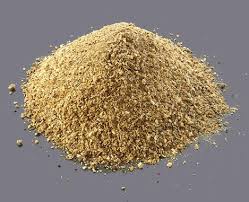Establishing A Ultra Modern Cattle Slaughtering and Abattoir Plant in Nigeria; The Feasibility Report.

Amongst all the livestock that makes up the farm animals in Nigeria, ruminants, comprising sheep, goats and cattle, constitute the farm animals largely reared by farm families in the country’s agricultural system.
Nigeria’s livestock resources consist of nineteen million, five hundred thousand (19,500,000) cattle, seventy-two million, five hundred thousand (72,500,000) goats, forty-one million, three hundred thousand (41,300,000) sheep, seven million, one hundred thousand (7,100,000) pigs and twenty-eight thousand (28,000) camels according to the National Agricultural Sample Survey (2011) as released by the minister of Agriculture and Rural Development, Audu Ogbeh.
The livestock industry plays an indispensable role in the traditional agriculture and largely subsistence economy of Nigeria, the sub-sector contributes about fifteen point three percent (15.3%) of the total agricultural sector.
The sector is undergoing a massive transformation fuelled by high demand for meat, which is likely to double in the near future, the major forces behind this, is the combination of population growth, urbanization and income growth (FAO/IAEA, 2006).
In the recent past, there is a greater emphasis on sustainable beef production through backyard beef fattening which has its focus on the long-term health of the environment while maintaining the economic viability of the farm and addressing consumers’ concern about beef they eat.
Cattle fattening is a livestock production practice that reduces animal movements thereby fattening cattle more quickly. Larger animals can be sold for more money on the market as they yield more meat.
People fatten cow for the same reason that other men operate factories, namely to make a profit by converting raw material which are of low value in their natural form into a product for which there is a good demand and sell for better prices.
In Nigeria, the common breeds used in the fattening program include Red Bororo, Ndama, Rahaji, Muturu, Sokoto Gudali, Abore and Mbala.
These are reared mostly in the tropical and sub-tropical regions of the country for beef production. They have a body characterized by great depth and width; and they are bred primarily for the production of meat under special conditions.
These breeds of cattle carry considerable muscle especially around the loin. These classes of animal possess a greater efficiency of converting poor quality forage into a good quality protein (meat).
The height of the animal has been found to be a useful indicator of animal performance in the feedlot. Taller animals generally grow more quickly and lay down less fat than shorter ones.
Millions of Nigerians make their livelihood from beef enterprises as producer, marketers and transporters. Other’s as processors of beef products, feed millers, veterinary services and in agricultural machineries.
It also generates a lot of revenue to the government through various forms of taxations. Inspite of all the contributions, the livestock sub-sector is a relatively neglected part of agriculture with its supporting services collapsing well ahead of others.
Though Nigeria plays a vital role in the livestock economy of Africa, her livestock production is not enough to meet the domestic consumption requirement. The total supply of livestock products fall short of the overall demand.
Beef consumption amounted to about three hundred and eighty thousand (380,000) tons in 2014 and is projected to grow up to one million, three hundred thousand (1,300,000) tons by 2050.
The meat market in Nigeria has poor infrastructure. Slaughter of livestock and fresh meat trade is concentrated in the public open markets without packing and refrigeration, resulting in a significant reduction in the quality and shelf life.
According to GEMS research (Funded by the World Bank and The Department for International Development (DFID), the Growth and Employment in States programme) it is estimated that annual domestic and imported slaughtering is around seven million, five hundred thousand (7,500,000) cattle (one million tonnes) with a livestock value of about ₦ 525-550 million.
The larger proportion of these animals’ population are however largely concentrated in the northern region of the country than the southern region. Specifically about ninety percent (90%) of the country’s cattle population and seventy percent (70%) of the sheep and goat populations are concentrated in northern region of the country.
Concentration of Nigeria’s livestock-base in the northern region is most likely to have been influenced by the ecological condition of the region which is characterised by low rainfall duration, lighter sandy soils and longer dry season.
Livestock moves to meet the major areas of demand in the south, south-east and south-west, particularly the Lagos-Ibadan Axis.
Traditional open-air market stalls dominate red meat retail sector accounts for about eighty-five percent (85%) of all trade, and sell all items, including meat and all products for the fifth quarter.
Other small but growing end-market segments and their share of the market are retail store (3%), retail supermarket (1%), institutions (3%), fast food (5%) and hotels and restaurants (3%).
Red meat trade is essentially based on the same day of slaughter, and retail sale in fresh (non-refrigerated) form whereas customers mostly consumed the same day as well. There is little product differentiation by carcass or cut quality.
This report seeks to examine the financial viability or otherwise of establishing a cattle slaughter and abbatoir business in Nigeria.
The capacity of the proposed plant is fifty (50) cattle per day and the plant can process boneless meats using halal approved processes in eight (8) hours working hours of double (2) shifts for three hundred (300) days per annum.
The plant would process beef as its main product and cattle head, fresh cow bone, blood, cattle hooves, fat, cattle skin (pomo), red offals, white offals and stomach contents as bye-products.
Table of Contents
EXECUTIVE SUMMARY 1.0 Business Overview 1.1 Description of the Business 1.2 Vision and Mission Statement 1.3 Business Objective 1.4 Critical Success Factor of the Business 1.5 Current Status of Business 1.6 Description of the Business Industry 1.7 Contribution to Local and National Economy 2. Marketing Plan 2.1 Description of Product 2.2 Product Packaging and Delivery 2.3 The Opportunity 2.4 Pricing Strategy 2.5Target Market 2.6 Distribution and Delivery Strategy 2.7 Promotional Strategy 2.8 Competition 3. Production Plan 3.1 Operational Details and Structure 3.2 Raw Materials 3.3 Machinery and Equipment Requirement 3.4 Description of the Location 3.5 Housing 3.6 Infrastructural Requirement 3.7 Transportation 3.8 Direct Cost 3.9 Pre-Operating activities and expenses 3.9.1 Operating Activities and Expenses 3.10Project Implementation Schedule 4.0 Organizational and Management Plan 4.1 Ownership of the Business 4.2 Profile of the Promoters 4.3 Key Management Staff 4.3.2 Management Support Units 4.4 Details of Salary Schedule 5. Financial Plan 5.1 Financial Assumption 5.2 Start - Up Capital Estimation 5.3 Source of Capital 5.4 Security of Loan 5.5 Loan Repayment Plan 5.6 Profit and Loss Analysis 5.7 Cash flow Analysis 5.8 Viability Analysis 6.0 Business Risk and mitigation factor 6.1 Business Risks 6.2 SWOT Analysis
Project Specification:
Additional Info
Get this Report
Direct bank transfer
To order the report, Please do pay the sum of ₦300,000 into
Account Name : Foraminifera Market Research Ltd
Account Number : 274 20 569 37
Account Name : Foraminifera Market Research Ltd
Account Number : 101 76 603 95
Account Name : Foraminifera Ventures
Account Number : 011 66 066 32
Make your payment directly into our bank account. Please use your Order ID as the payment reference. Your order will not be shipped until the funds have cleared in our account.
Instructions
After payment call us on 01 -29 52 413 / 08033782777 or email us at foraminiferamarketresearch@yahoo.com with the payment details. After payment confirmation, the soft copy of the report would be sent to you within 24 hours.



